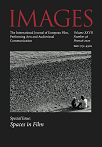Neurobiologia na tropach uniwersalizmu percepcji sztuki. Prawa estetyki V.S. Ramachandrana i W. Hirsteina w kontekście dzieła sztuki filmowej. Studium przypadku: Nadja Michaela Almereydy
Neurobiology in search of the universality in the perception of art. V S. Ramachandran and W Hirstein’s laws of aesthetic experience in relation to a work of film art. Case study: Michael Almereyda’s Nadja
Author(s): Hanna PrzybyszSubject(s): Aesthetics, Neuropsychology, Film / Cinema / Cinematography
Published by: Uniwersytet Adama Mickiewicza
Keywords: aesthetics; neuroaesthetics; visual perception; brain; Film Art; Ramachandran; Hirstein; Almereyda; Nadja;
Summary/Abstract: Vilayanur S. Ramachandran and William Hirstein are the authors of the concept of a work of art understood as an exaggerated stimulus in the creative process. The aim of art, according to them, is (a) to show the essence of something in a perceptually accessible way, and (b) to evoke a strong reaction from the recipient. Scientists say that the aim of art is not to perfectly reproduce reality, but to present the very essence of an object, scene or event by exaggerating its most characteristic features, while ignoring non-essential features. The effect of this treatment is a super stimulus, which is a supernatural stimulus that does not exist in the real world. Researchers have proposed seven universal – evolutionarily and culturally – neurological laws of aesthetic experience in relation to the visual arts (painting and sculpture). I propose to extend the tool apparatus of neuroaesthetics from the area of unimodal arts to a work of film art. It is an interesting tool for research into film aesthetics and masterpieces. In this paper, I will discuss these laws and make a representative analysis of them in a visual case study of Michael Almereyda’s film Nadja (1994). The main goal of my work is to show the stricto naturalistic position. Man is not aware that the first stages of cognitive perception have a significant impact on his interest in art, what he pays attention to, and on aesthetic experiences on a sensual, unconscious level. It is an interdisciplinary attempt to provide consistency of research approaches in the humanities with the naturalistic one in the area of natural sciences, which shows that on some levels we are very similar to each other and only in the process of ontogenesis do we acquire individuality – that we are governed by universal laws, not only those related to ourindividual interests and tastes.
Journal: Images. The International Journal of European Film, Performing Arts and Audiovisual Communication
- Issue Year: 27/2020
- Issue No: 36
- Page Range: 225-245
- Page Count: 21
- Language: Polish

